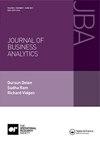揭露机器学习中的模型偏差,在网络钓鱼检测的背景下重温那个喊狼来了的男孩
IF 1.6
Q3 COMPUTER SCIENCE, INFORMATION SYSTEMS
引用次数: 2
摘要
机器学习(ML)源于对人工智能(AI)的追求,是当今最活跃的跨学科领域,其应用范围从犯罪学到欺诈检测和生物识别学急剧增加。ML和统计学都强调模型估计/训练,因此共享不可避免的1型和2型错误。将统计误差的概念扩展到机器学习领域,我们设计了一个开创性的类似pH刻度的比率,并打算将其作为机器学习模型偏差的试金石指标,完全被流行的准确性性能标准所掩盖。使用公开可用的网络钓鱼数据集,我们对一系列分类模型进行了实验,从而揭示了具有不同偏差水平的模型的重大成本影响。基于这些结果,我们建议从业者进行人工判断,并将他们自己的风险承受能力与与每个ML模型相关的偏差比率相匹配,以防止潜在的意外不利影响。本文章由计算机程序翻译,如有差异,请以英文原文为准。
Exposing model bias in machine learning revisiting the boy who cried wolf in the context of phishing detection
ABSTRACT Grown out of the quest for artificial intelligence (AI), machine learning (ML) is today’s most active field across disciplines with a sharp increase in applications ranging from criminology to fraud detection and to biometrics. ML and statistics both emphasise model estimation/training and thus share the inescapable Type 1 and 2 errors. Extending the concept of statistical errors into the domain of ML, we devise a ground-breaking pH scale-like ratio and intend it as a litmus test indicator of ML model bias completely masked by the popular performance criterion of accuracy. Using publicly available phishing dataset, we conduct experiments on a series of classification models and consequently unravel the significant cost implications of models with varying levels of bias. Based on these results, we recommend practitioners exercise human judgement and match their own risk tolerance profile with the bias ratio associated with each ML model in order to guard against potential unintended adverse effects.
求助全文
通过发布文献求助,成功后即可免费获取论文全文。
去求助
来源期刊

Journal of Business Analytics
Business, Management and Accounting-Management Information Systems
CiteScore
2.50
自引率
0.00%
发文量
13
 求助内容:
求助内容: 应助结果提醒方式:
应助结果提醒方式:


